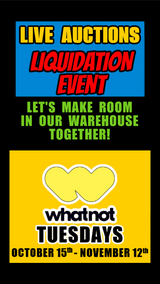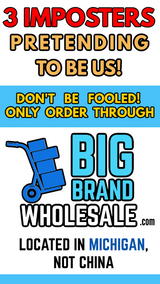Top 5 Reasons Why You Aren't Getting Ungated on Amazon
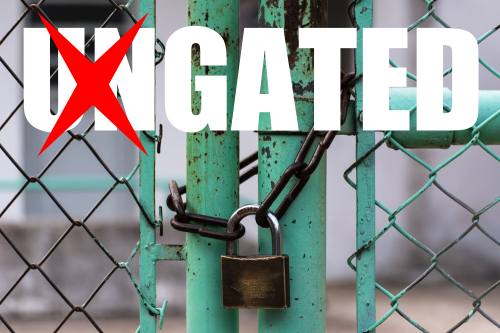
Having problems getting Ungated on Amazon? We get literally thousands of questions a month about Amazon Ungating.... and we don't even sell on Amazon. BUT, as a wholesale business owner, all of these ongoing questions from our customers led me to start thinking I need to take a non-bias look at the Amazon Ungating process and put together a super solid 100% Free Amazon Ungating Step-By-Step Guide for our buyers (you don't even need to download it and I'm not trying to sell you an eBook, lol! The guide is a long article here or you can look at our shorter version called Amazon Ungating Checklist) We sell wholesale, so the faster you get ungated the faster you can buy more of our products. So in December 2019 I started researching. I spent almost 45 days in an Amazon Ungating Rabbit Hole and I could see why people are so damn confused. After spending almost 8 weeks digging into Amazon Seller Ungating Problems I found 5 key reasons why rejections happen:
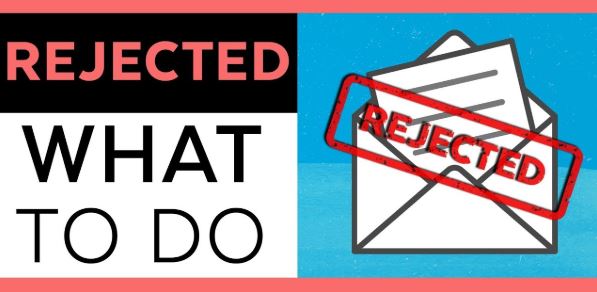
1. Criteria Not Met
Between chatting with our buyers and researching Amazon Ungating I quickly realized that MOST people are deciding they want to sell on Amazon, buying the product they want to sell then getting rejected by Amazon. But WHY? I wrote a super thorough article about the requirements to be Ungated in an Amazon Category. I strongly suggest you check it out because chances are you are missing one or more essential requirements. But if you don't want to read, Amazon requires a few main criteria: A Resellers Certificate, an EIN, an LLC, correct "Purchase History" AND.... *drumroll*.... an Amazon Seller HISTORY. If you are missing only one of those key factors you will be rejected over and over and over.
2. Not Understanding Certain Words
It's really easy to misunderstand similar words, but confusing a single word can mean the difference between an approval and a rejection. A couple of the biggest confusions people have are:
Invoice vs Receipt
A receipt is the 25-foot-long piece of thin, skinny paper you get from CVS when you buy a pack of gum or botteled water. An invoice is what a company, like ours provides. It's typically a full sheet of paper (or even multiple sheets of paper) that can be printed on 8.5 x 11" printer paper. This is what an invoice looks like,
Order Confirmation (Receipt) vs Invoice File (PDF)
Most websites, in general, will instantly send you an emailed receipt as soon as you order. This is an "Order Confirmation". This email is to let you know that you have successfully placed an order. Obviously, if you placed an order and nothing happened, you would wonder if the order went through, so an Order Confirmation Email is the perfect way to let the buyer know the order was received. However, this is NOT an "Invoice". It is just an email confirmation, even though it contains mostly the same information as the invoice.
Invoices used to be sent in an envelope via standard "snail mail" but thanks to the internet, invoices are now sent electronically or provided within your account online.
An invoice can be printed on 8.5" x 11" standard PC paper, emailed or saved as a PDF file. Here is how to print an invoice when you order through Big Brand Wholesale.com
Distributor vs Wholesaler vs Liquidator vs Retail Arbitrage
Retail Arbitrage is when you drive to CVS and buy a basket-full of $13 Revlon lipsticks for $5.99 each from the Clearance Section. This is NOT "wholesale". This is not wanted on Amazon.
A Distributor is a company who works with a Factory to DISTRIBUTE the factories new merchandise.
A Wholesaler typically works with a Distributor to get the merchandise from the Factory.
A Liquidator (BigBrandWholesale) works with Retailers and Warehouses (sometimes Distributors) to purchase their leftover / extra stock at a fraction of the original distribution price.
Invoice vs Purchase Order
An Invoice is a form of receipt the wholesale company gives you when you make a purchase. A Purchase Order is what YOU create (continue reading below)...

"PO" is a short term for "Purchase Order". I have discovered that the vast majority of people rejected by Amazon had confused a "Purchase Order" for an "Invoice".
If you contact a wholesale company and ask them to provide you with a Purchase Order they are going to think you are nuts because a Purchase Order is something YOU create, hence the name "Purchase"...."Order".....
You can learn a ton more about Purchase Orders, how to Create Purchase Orders, etc in my article about the requirements to be Ungated in an Amazon Category
UPC vs SKU
A UPC is a "Universal Product Code". People get social security numbers assigned to them whereas products get UPCs.
A SKU is a "Stock Keeping Unit".
For example, if our company, BigBrandWholesale.com buys 10 cases of Maybelline Red Matte Lipstick, the UPC for these lipsticks might be 068329323554 because Maybelline legally had this Universal Product Code applied to the product. When the cases arrive to us, we assign each case SKU #17594 (we call it "Lot Number instead of SKU). We then assign them a shelf location in our warehouse. When you buy a case of SKU #17594 from our warehouse we know what you purchased and what shelf it is on. When the merchandise arrives to you, you will then likely sell each lipstick by the piece and you will likely assign it a new SKU so you know where it is located in your warehouse / storage area. So as you can see, a SKU is only meaningful to the current owner of the product whereas the UPC is the number permanently assigned to the lipsticks forever.
(Contract) Terms vs (Payment) Terms
We have a great article to explain the difference between the two, even though they are both called "Terms". Read our blog post Amazon Ungating: What are Terms and How to Get Them

3. Purchasing Incorrect Merchandise
(As of 2.2.20) Amazon has a requirement of at least 10 exact duplicate items on an invoice. Let's refer to this as "10 pieces of one SKU" or "10 pieces of one UPC". This means your invoice must clearly reflect 10+ duplicate items, no exceptions. if you choose to purchase Mixed Merchandise, Salvage Boxes, etc, you are not able to show invoices for 10+ exact duplicates of one SKU. *note: Amazon may increase or decrease this requirement at any time. Always make sure you check todays Amazon requirements before placing orders.
IF YOU'RE CONFUSED: Stop. Re-Read. Repeat.
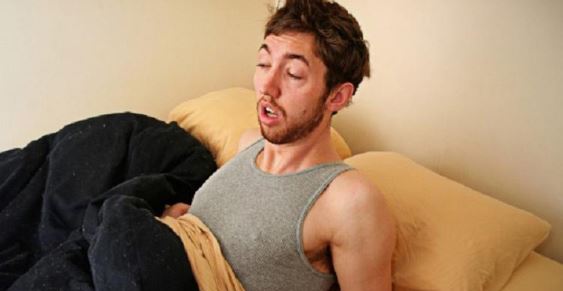
4. ESTABLISHED METRICS
We touched on this briefly in the first bulletpoint, but this is a deal-breaker for Amazon. Even if you are an established business and even if your company has been around for a decade, you still will NOT be ungated on Amazon UNLESS your Seller Metrics on Amazon.com are "established". This means you ABSOLUTELY MUST sell other stuff on Amazon, build your business on Amazon selling other stuff RELIABLY then you can apply to be unagated. Otherwise, you can apply non stop, get rejected non stop and ultimately be banned from ever getting approved in that category.
5. Too Many Attempts. Amazon's entire purpose for "gating" is to eliminate sellers who are not up-to-par or do not follow rules. If you are rejected and you immediately resubmit without READING, LEARNING and making adequate adjustments you will end up getting a "Final Rejection" that will ban you from that category / brand forever. So, before you rush to resubmit, check out our step-by-step Amazon Ungating guide!
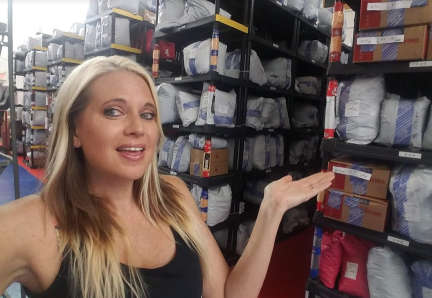
Keep in mind, if you don't like the rules, and if ya think the requirements are too dictatorship-like for you, there ARE tons of other places and ways to sell! Amazon is NOT the one and only market. As I mentioned at the beginning of this article, we do not sell on Amazon, even though I have had Amazons B2B division call me a dozen different times, almost begging for us to be a main seller. While I buy tons of stuff off Amazon (home decor, cleaning products, even office supplies), selling on Amazon isn't right for our company at this time... and we have been in business since 2005 and are still growing every year. We are currently in a 7,500 sqft warehouse with 30 foot ceilings and two stories! We have survived great.
Next, check out our Amazon Ungating Checklist (a quick and easy way to see if you meet all the criteria!) or read our other guides:
- Top 5 Reasons You Aren't Getting Ungated on Amazon
- Amazon Ungating Checklist
- What is a Purchase Order & How to Get One
- What is a BOL and How to Find Yours
- What is a PRO Number and How to Find Yours
- How to Get a Resellers Permit / Resale Certificate
- What is an EIN and How to Get One
- What is an LLC and How to Get One
- How to Create an Awesome Company Logo FAST and FREE
- Help! My Inventory is Priced Super Low and Still Isn't Selling!
- Learn About Our Invoices
- Download our Contract Terms Document for Free: https://bigbrandwholesale.com/faq/questions-about-invoices/terms-download-document/?ctk=1296275b-acaa-4553-9425-750ba3dd68b2
- Or, TOUR OUR WAREHOUSE https://bigbrandwholesale.com/about-our-warehouse/

Recent Posts
-
WhatNot LIVE AUCTIONS LIQUIDATION EVENT! October 15th - Nov 12th!
We are doing a MASSIVE liquidation auction event on WhatNot! Every TUESDAY from October 15th thr …2nd Oct 2024 -
MASSIVE NEWS! 4 HUGE UPDATES Coming to Big Brand Wholesale.com!
We have TONS of exciting news! Check out our Facebook video from July 12th 2024 (below) then keep r …22nd Jul 2024 -
3 COMPANIES PRETENDING TO BE BigBrandWholesale.com! DO NOT ORDER THROUGH IMPOSTERS!
IMPOSTERS! BE CAREFUL!! DON’T BE FOOLED! We now have at least 3 different people PRETENDING to …23rd Dec 2023


